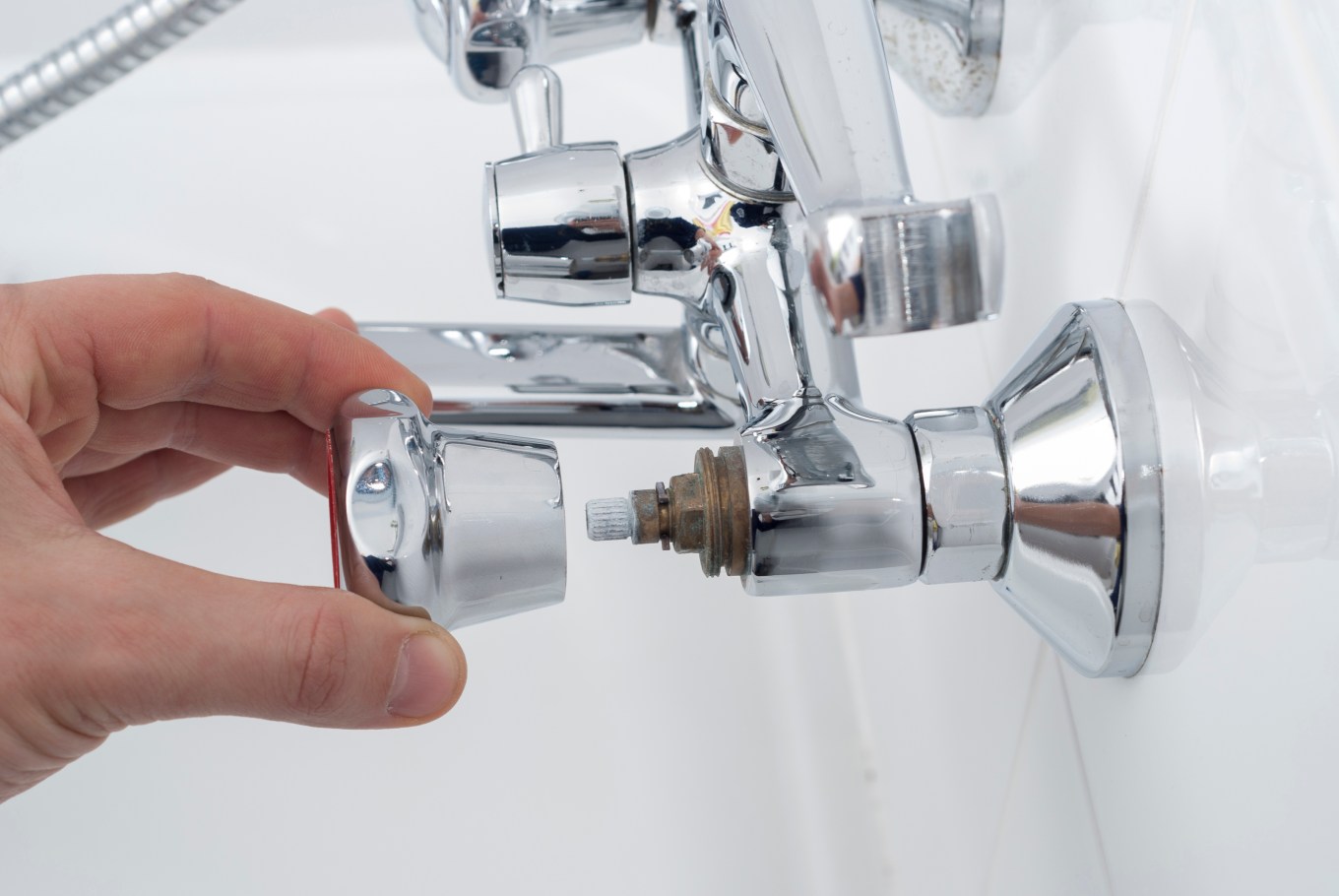Do you know what differentiates a shower that turns water boiling after a toilet flush and one that maintains its temperature when using another water fixture? The type of shower valve you use, of course!
That said, here’s what you should know when choosing the right shower valve types, whether for a shower remodel or replacement.
What Is a Shower Valve?
Image Source: houselogic.com
Shower valve is the plumbing fixture which controls the direction of water flow to a shower head. The unit is normally positioned directly into the wall of the bath or shower, and connected with the hot and cold water pipes.
Thus, it has typically two handles to regulate temperature and flow of water. It also turns the showerhead and faucet on and off. Many different shower valve types are present in the market, so you need to choose the best one.
7 Common Types of Shower Valves
1. Hot and Cold Valve
The hot and cold valve is a type of shower valve that controls the temperature of the water. It comprises a few parts: It comprises a cold water inlet, a hot water inlet, a mixing valve and a water outlet. Most of the time, the mixing valve sends a mix of cold and hot water to the desired temperature and to the faucet and showerhead.
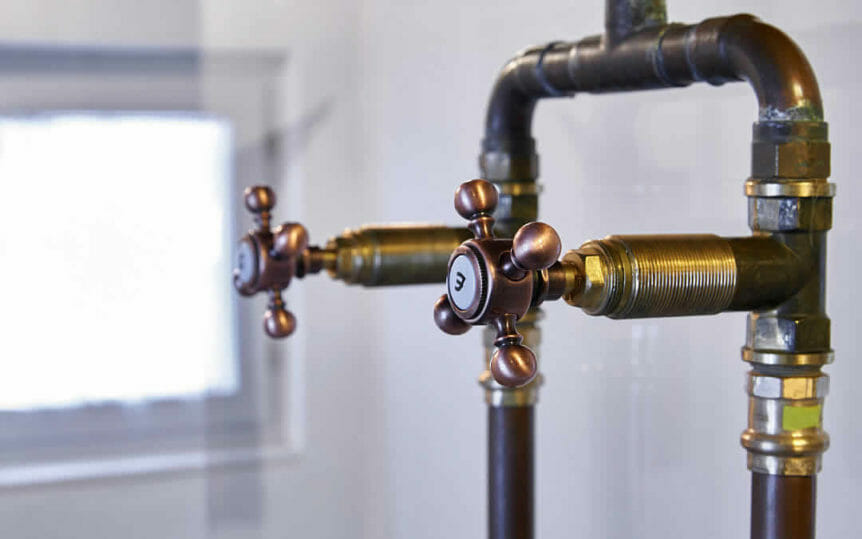
Image Source: johnmooreservices.com
Unlike most other shower valves, its trims feature two individual handles, which work like a standard double handle faucet. For hot water as well as cold water you simply have to turn the left side of the handle. When you turn the water on, those two outlets will mix water in proportion to which one you allow to be more open to get the temperature that you want.
It is pretty easy to use this type of valve. But it did not have an anti scald function. If there’s a fast loss of cold water there’s no built in way to keep the water from overheating.
2. Thermostatic Valves
Thermostatic valves rely on a thermostat to sense incoming water and to cool the water to the most precise temperature during your showering. They are intended to keep the water at a constant temperature when the pressure of the water changes.
A thermostatic shower valve is designed for temperature regulation, not flow water, hence the control of the latter is done by another component called volume controls.

Image Source: diyworks.co.uk
The unit consists with two valves and two handle positions at the end of its structure. This helps you to alter the rate of water heating that does not in any way touch on the quantity of water. Many people will also agree that it enables you to control the temperature of the water being dispensed directly. It does this by enable you to set a desired temperature. And hence you are protected against scalding because the temperature is maintained at one degree.
Thermostatic shower valves are used in most custom showers especially if the shower has several shower outlets. For example, describe a master shower completed with a shower head, body jets, a hand and perhaps a overhead rain shower head. These are selectable and you could turn all of them on or off in these applications you do not need to use a diverter to switch between the two continually.
3. Pressure-Balancing Valves
A pressure-balancing shower valve (also known as a mechanical, shower pressure valve, or anti scald valve) will give you consistent water pressure in your shower even as the water temperature fluctuates. If you have a lot of showers in your house that get used at different times this is useful. It controls flow and temperature as the hot to cold volume ratio of water.
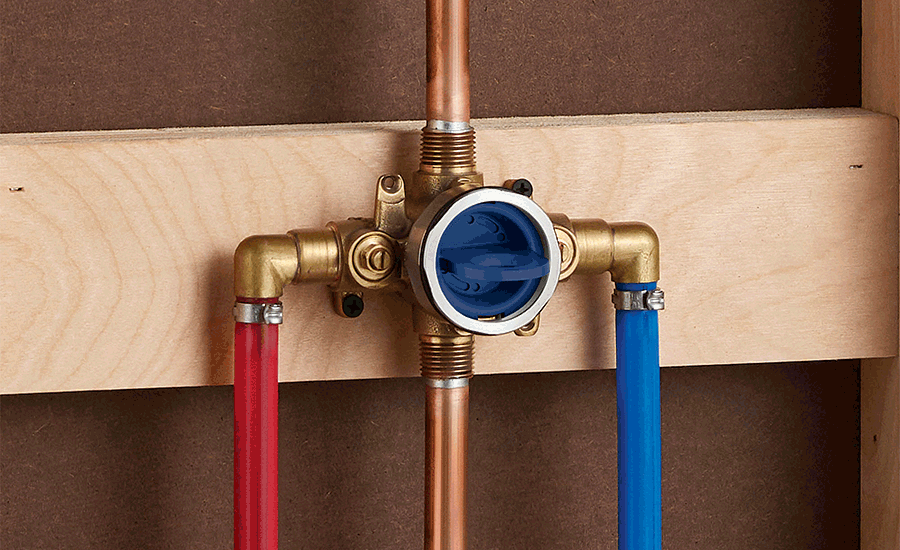
Image Source: pmmag.com
It is a very convenient and effective unit. For example, if you are flushing a toilet with a person showering in another bathroom, this shower valve type prevents your shower pressure from fluctuating. It is also good for 1–2 faucets.
Water pressure changes from hot and cold water lines will be detected, and then, using several pistons and diaphragms, one side will be restricted to maintain a constant water temperature. However, the main disadvantage is that such a shower valve can be pricier than other models.
4. Volume Control Valve
The shower has a volume control valve, to turn it on and off, turn the water off or set the desired amount that is flowed form the outlet. They can’t fit any other type and function with thermostatic shower valves only. In other words, the individual volume control valve regulates one outlet at time. This paired with a diverter valve is the only way to regulate most outlets.
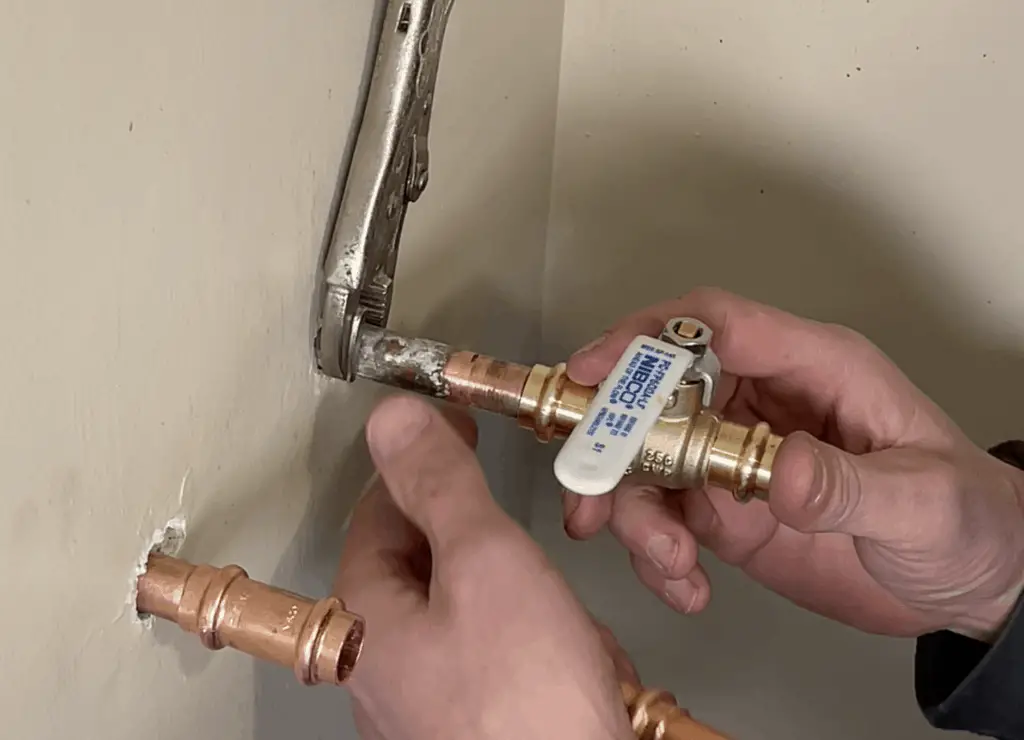
Image Source: everydayhomerepairs.com
The number of outlets the diverter can direct to is limited by the number of ways it is designed for; two for a two-way and three for a three-way. That means that in order to use four outlets one additional control would be needed. The best practice though is to use four faders and control them independently of one another.
In addition, volume control valves and its trim are sold separately with the thermostatic valve. Though it is still rare, all thermostatic valves for volume control are now being made by manufacturers. Nevertheless, such valve may incorporate a built-in diverter valve for two or more outlets.
5. Diverter Valve
The diverter valve, sometimes known as the transfer valve, is an in-wall type that lets you re direct the water from one output to another. It typically doesn’t regulate the temperature or activate the water supply on and off. On the contrary, it can be another valve in a wall or as a part of the main valve.
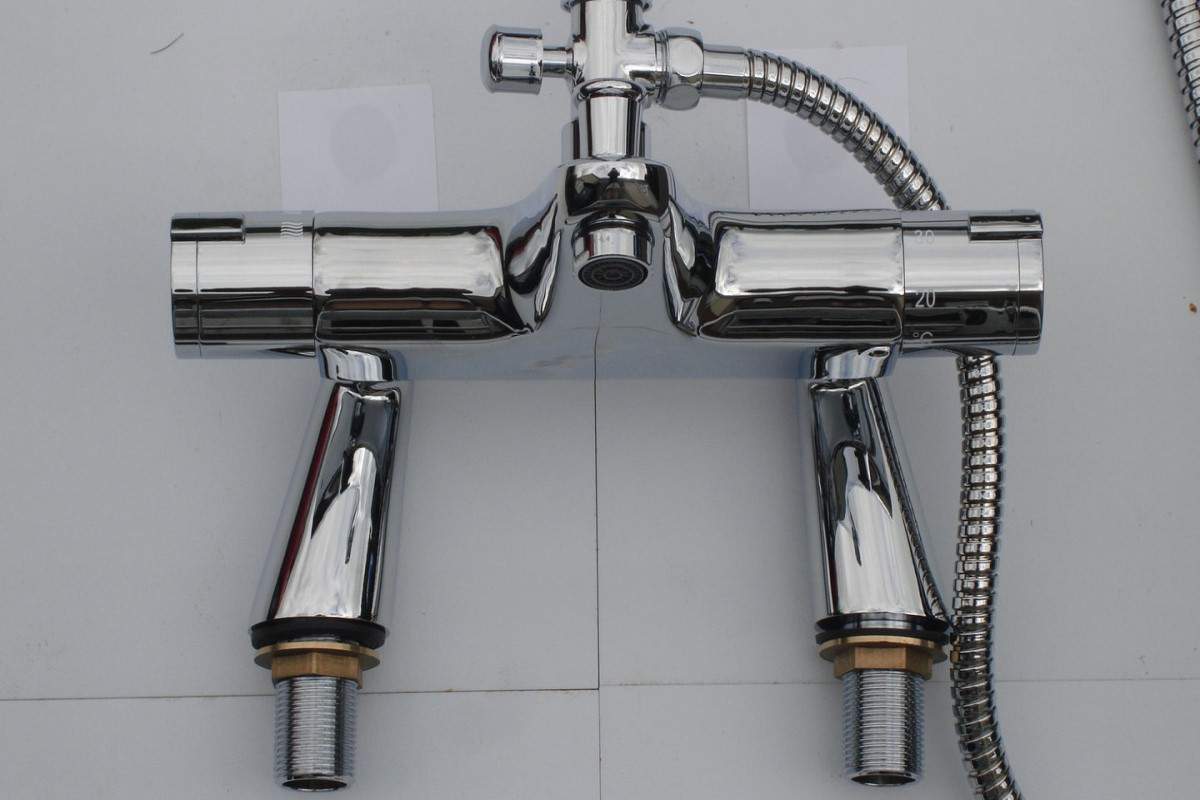
Image Source: aradbranding.com
The water flow is transferred by closing the supply of the current active one and linking it to another tap nearby. However, there are certain diverter valves through which water can flow to two different outlets at the same time but the flow of water is reduced because it is not as it would be with the volume control, water flows to one component only.
Diverter valves are of various types. The two-valve diverter and the three-valve diverter are the most often used types. While there are some diverter valves which cannot be fitted into an existing main shower valve, there are those which can. On the other hand, there are some options which are better than an in-wall diverter to divert the water (Shower Arm Diverters, Tub Spout diverters).
6. Shower Mixing Valves
Shower mixing valve is one of the oldest types of shower valves, and its probability is highest in the houses built some time back. This shower valve regulates the water temperature from the faucets then pumps water through the showerhead for the shower.

Image Source: homeguides.sfgate.com
Also, since this shower valve type doesn’t control unexpected pressure changes, you run the risk of scalding when you have less cold water pressure. New buildings where the risk exists are no longer permitted to use it. However, another problem with this unit is controlling the water temperature. At times, the water may be extremely cold or hot when another person flushes the toilet or turning on a tap.
And you have to set the temperature every time you’re using the water because there’s no way to preset the temperature. If you do already have a mixing valve, then a pressure balancing or even a thermostatic valve might be worth updating to. It should be before you add those, though, to make sure that your plumbing can handle the additions.
7. Transfer Valve
The transfer valve, similar to the diverter valve, is one of the current shower valves in the market. This valve will supply water to a number of outlets at the same time. If you have a shower and a tub in the bathroom, and you want to run them both at once, this is extremely handy.
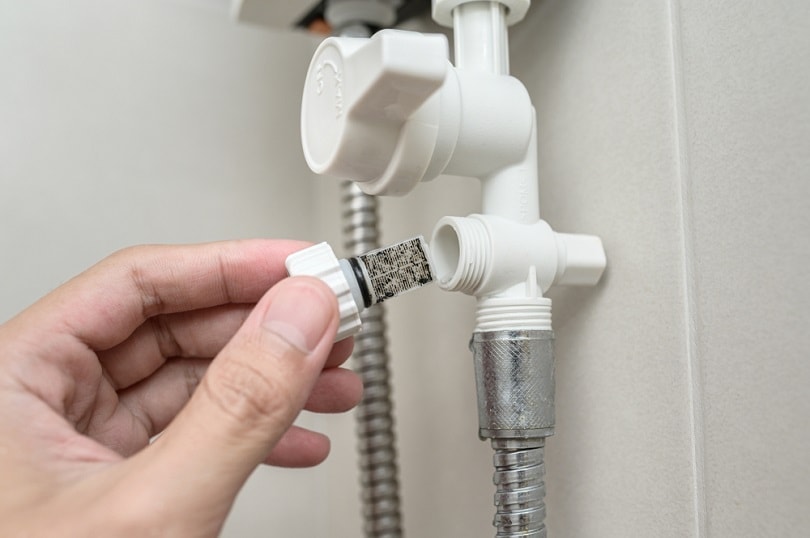
Image Source: housegrail.com
With the latest models of these shower types, valve digitally controls all the programs and functions involved in temperature and pressure without the need to use knob.
How to Choose Between Shower Valve Types
1. Connection Type
When searching for the right type of shower valves, it is important to understand the various connection types.
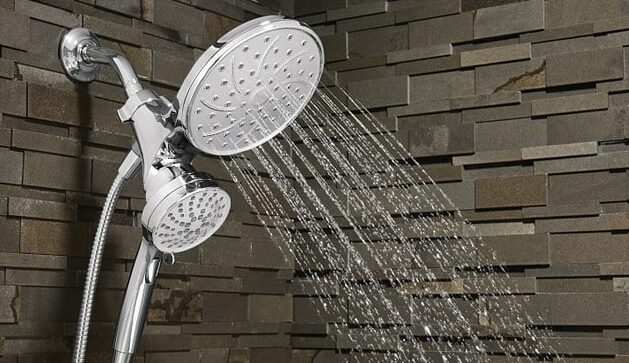
Image Source: nationaltoday.com
i) Copper connection (cc)
If it’s a copper connection then the plumber will have to solder directly into the shower valve.
II) Iron Pipe straight (IPS)
Iron Pipe Straight (also known as 1/2″ NPT) connections are threaded connections on the shower valve that the plumber will use to thread an adapter to and then solder copper pipe into the adapter.
iii). PEX
Most homeowners prefer to use PEX tubing because it is flexible, resistant to corrosion and scale, and easy to install—soldering isn’t required. For this reason, copper pipes are being gone through in new buildings in top of PEX pipes.
There are only a few of the types of the connections, so it’s vital to contact a plumber before the store valve shopping.
2. The Number of Connection Ports
When considering which shower valve to purchase, think about how many model connects there will be. Most showers valves have two connection ports but some may have as many as three. The more elementary number of connection ports you have, the more fixtures you can connect to the valve.
For example, if you’re installing a rain shower and a hand shower head, you will need a three port shower valve for example.
3. Concealed or Exposed Valves
Consider if you like the concealed valve or an exposed valve when selecting kinds of showers. Most concealed valves are installed within the wall, and therefore, not visible. This gives your shower a more finished look, but if the valve is broken, it can make repairs harder.
In contrast, exposed valves are mounted on the outside wall so that they are visible. This makes it easier to repair and maybe difficult not to make them seem less refined.
4. Threaded or Sweat Connections
Shower valve bodies are classified into two categories: sweat (soldered) and threaded connections. The only major difference between the two is the link with the water pipes.

Image Source: en.wikipedia.org
Threaded shower valve bodies have screw on connectors while sweat shower valve bodies are connected by soldered nuts to copper pipes. Furthermore, sweat shower valve bodies are used in new construction more than the threaded ones because they offer a better connection. However, both types of shower valves can be installed in existing homes.
5. Check/Service Stops
Considering the check/service stops is a personal preference but they are quite convenient features if you live in an apartment. They’re there so you can shut off the water to the valve so you can fix it without shutting off the main water supply.
If you live in an apartment building, you may have to wait several hours for approval from the building’s superintendent before you can turn off the water to your entire building — during which time you will stay without water.
If you only live in a single family house, these check/service stops allow you to work on the valve while your washer is running.
6. The Brand
Pay attention to the shower valve brand so that when you have a problem, you know as to where you can get your shower valve in case you have a shower valve leak, a national brand of shower valves with an excellent customer care service can save you a lot of problems. In addition, if you need them in a hurry, repair parts will be right down the road at your local hardware shop.
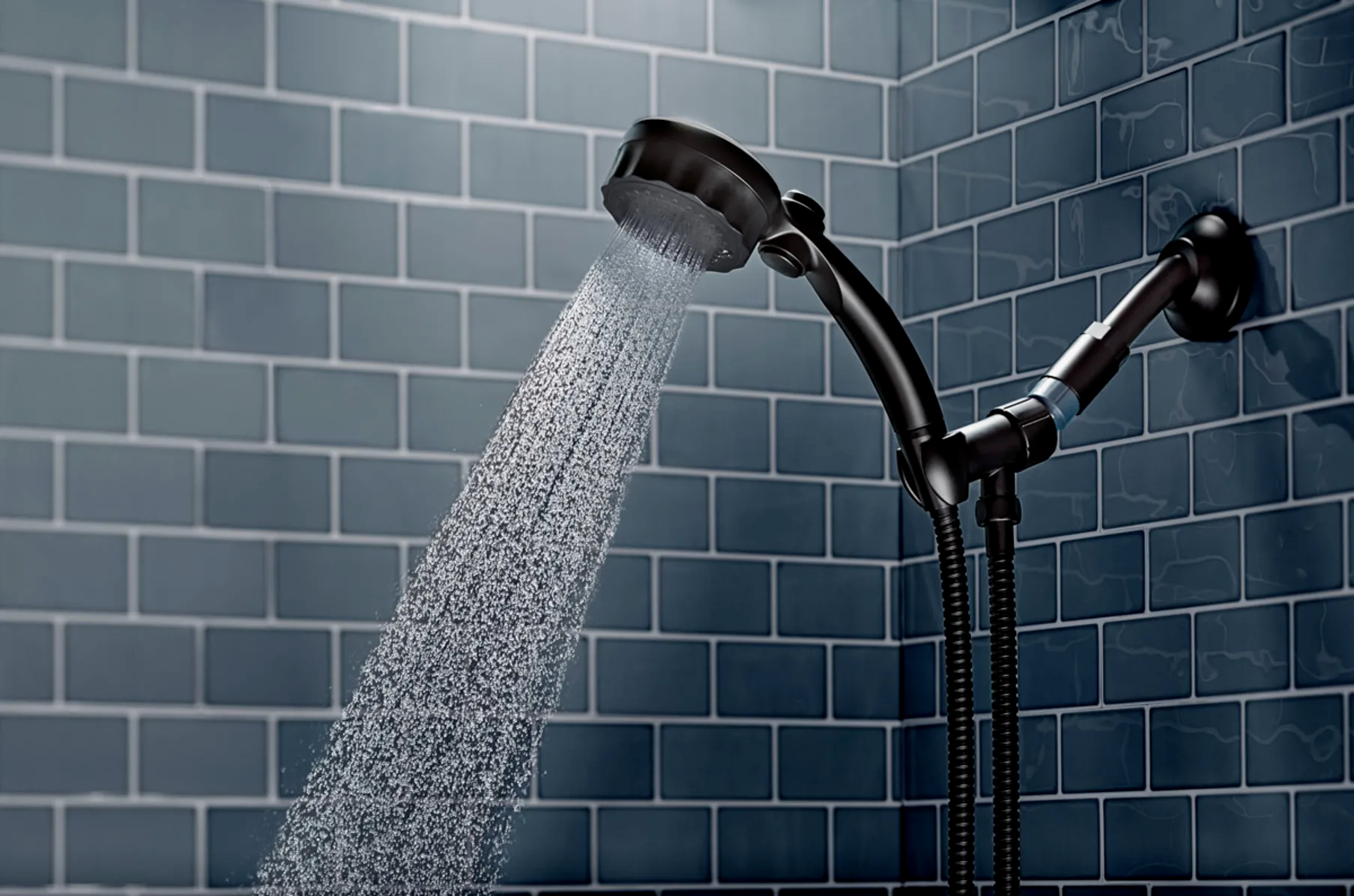
Image Source: indiegogo.com
Otherwise, repair parts for off-brand products may not be available. If you have replacement parts, it’s no problem to replace the shower valve in your wall; if not, however, when it comes to shower valves in the wall, you might have to open up the wall to take out the whole broken shower valve.
In order to determine the manufacturer of your existing valve, some valve manufacturers use their complete name or a group of letters such as M for Moen and K for Kohler, or a logo or letter may appear on the trim plate.
Additionally, some of the shower valves from each brand may work with only the specific style of trim found within that brand, and always check not only with the manufacturer, but with the style of the faucet you have or one you want to purchase.
Featured Image Source: millers-va.com


